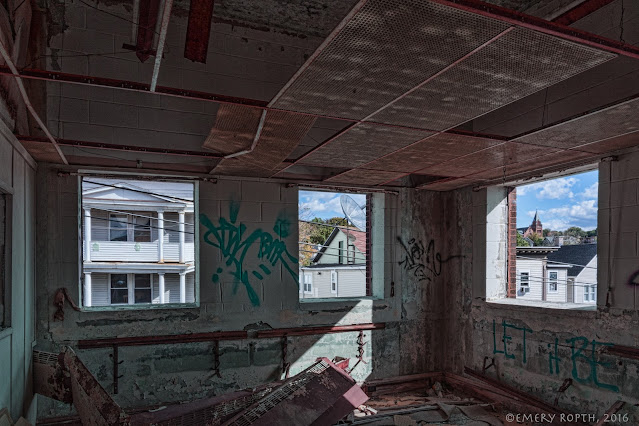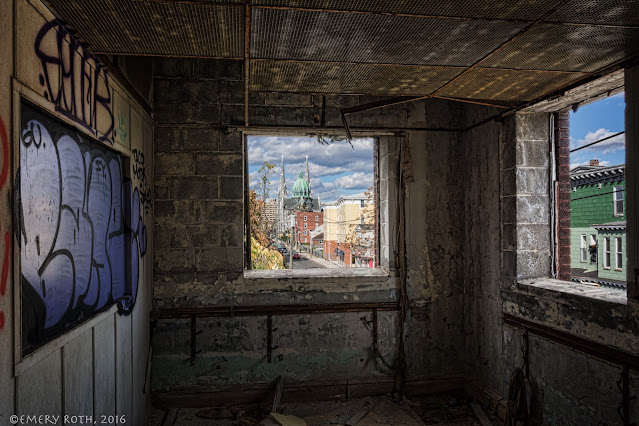The Mad River follows a ravine between Mill Street and River Street in Waterbury, CT, through what looks like a park but whose chain link border is a legacy of its toxic history. The river flows under two bridges beside where South Main crosses Washington Street, moments before its waters blend with those of the Naugatuck. The view is upstream from the historic, 1881, iron bridge on Washington Street across a modern highway bridge on South Main. Once this was the center of acres of furnaces and factories making the metal that would become buttons and pins, oil lamps, clocks, bullet casings and tea kettles. It’s a busy intersection of roads and rivers with an awkward jog put in place when traffic was horse-drawn wagons and laborers trudging to and from work in shifts.
The odd intersection isolates a tiny, right triangle of real estate with legs along the crossing avenues and a Mad River hypotenuse. It is a site almost too small for a building, but a four story apartment house known as “The Louis Block" has stood there since 1890 with balconies buttressed out over the river to make its narrow plot more commodious. Delicate brick work on the front (not shown) of the Louis Block have caused speculation that it might be the work of Robert Wakeman Hill, sometimes called CT’s “State Architect.” Across the river from the Louis Block several bays of train trestle, hidden behind the foliage, are all that’s left of a timber structure that crossed here carrying rumbling, puffing freight loads of manufactured goods and raw materials through the Mad River Ravine.
The Waterbury Companies was founded by Aaron Benedict to make military buttons for the War of 1812. It grew to be the Benedict & Burnham Brass Company making buttons, clocks and eventually making injection molded plastic parts. The Waterbury Companies is still making buttons that stylishly supply clothiers such as Ralph Lauren and Brooks Brothers.
The iron bridge is the work of the Berlin Iron Bridge Company which also fabricated steel to build the historic Farrel Foundry downstream in Ansonia.
from Washington Street upstream on the Mad River
up the Mill Street - River Street Ravine
Looking across S. Main St., down Washington St. to the iron bridge






.jpg)













